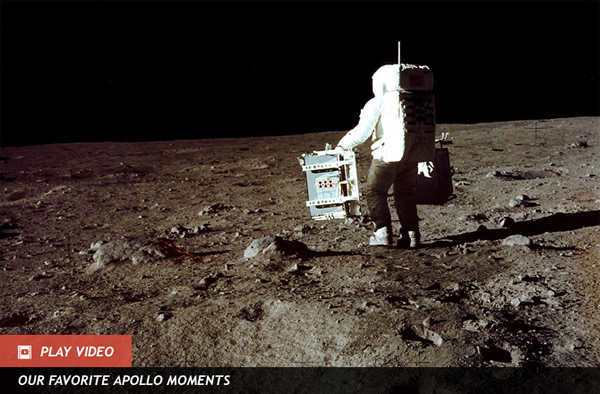What Treaty? Politicians Want Apollo National Parks
What Treaty? Politicians Want Apollo National Parks
What do you get when you have a group of well-meaning House Democrats (with a little too much time on their hands) who want to protect the historic Apollo landing sites? A National Park on the moon!
Sadly, this “National Park” could neither be “National” or a “Park,” at least in the traditional sense. In fact, even in a non-traditional sense, this “Park” cannot be fully ratified, at least in the near future.
At first glance, setting up some kind of protection around the Apollo landing sites seems like a good idea. We’re seeing an increase in commercial interests in space, so it seems only logical to assume that we’ll eventually see tourists doing the “Armstrong Tour,” reliving the events of that fateful day in 1969 that saw Neil and Buzz take humanity’s first steps on another world.
The last thing we’d want to see are sightseers kicking up the dust of Armstrong’s first bootprint and some rich pilferer making off with the UV-bleached American flags planted by six Apollo landings, only to sell them on eBay. And we definitely don’t need to see dozens of broken radiation-dried eggs stuck to the wheel arches of Apollo 17′s moon buggy.
No, we wouldn’t want that. And neither would the House Democrats, Reps. Donna Edwards (D-Md.) and Eddie Bernice Johnson (D-Texas). They’ve proposed a nifty bill called the “Apollo Lunar Landing Legacy Act” (H.R. 2617), creating the “Apollo Lunar Landing Sites National Historical Park” that would set up an electrified perimeter fence, attack dogs and in-space National Park Rangers riding Segways enforcing U.S. law over the new lunar parks. OK, I made the last part up, but the mind boggles as to how this bill would be enforced.
The bill reads:
“Under the legislation, the park would be established no later than one year after the bill passes and would be run jointly by the Department of the Interior and the National Aeronautics and Space Administration (NASA). The measure would allow the government to accept donations from companies and foreign governments to help manage the landing sites and ‘provide visitor services and administrative facilities within reasonable proximity to the Historical Park. After one year, Interior and NASA would have to reach an agreement on how to manage the site, including how to monitor it, managing access to the sites and cataloguing the items in the park. The government would also have to submit the Apollo 11 lunar landing site to the United Nations for designation as a World Heritage site.”
(Phew — I’m glad they included NASA in the bill, we all know how much loose change that over-funded agency carries around for policing national parks on the moon.)
In a “perfect” universe, where NASA had a blank check and had the international authority to extend American law into outer space, this bill would make a lot of sense. Sadly, as quickly pointed out by veteran space journalist Mark Whittington, this bill flies in the face of a pretty huge treaty that the U.S. is bound to obey.
“Since the United States has foresworn any sovereign claims on the moon, thanks to having signed and ratified the Outer Space Treaty, there does not seem to be any legal basis to declare any part of the lunar surface a national park, not to mention attempting to enforce such a declaration,” writes Whittington.
Treaties are for wimps, it seems, according to this new bill. Unfortunately, the Outer Space Treaty, which was drawn up in 1967 and signed by the United States, will need to be smashed to pieces to make the Apollo National Park a reality. In fact, pretty much all the articles of the Outer Space Treaty would need to be modified. But of particular note:
Article II: Outer space, including the moon and other celestial bodies, is not subject to national appropriation by claim of sovereignty, by means of use or occupation, or by any other means.
Setting up a “National Historic Park” is more than slightly “sovereign,” I think.
Sadly, it seems this bill cannot be enforced, certainly not through U.S. law. The United Nations, however, could at least oversee guidelines for preserving the Apollo landing sites and in all likelihood, when commercial space activities become commonplace and more nations push out into the solar system, there will be systems put in place that will protect humanity’s heritage sites.
But, having said all that, if creating some kind of “visitor center” or some historic lunar site monitoring station resulted in a boost in budget for NASA, I’d be more than happy to see the bill pass into law. Sadly, as it’s currently worded (regardless of foreign government involvement), I doubt that will be the case.
Image: Want to walk in Buzz Aldrin’s footsteps? Tough. This is a National Park! Credit: NASA(Jul 11, 2013 08:04 PM ET // by Ian O'Neill)












